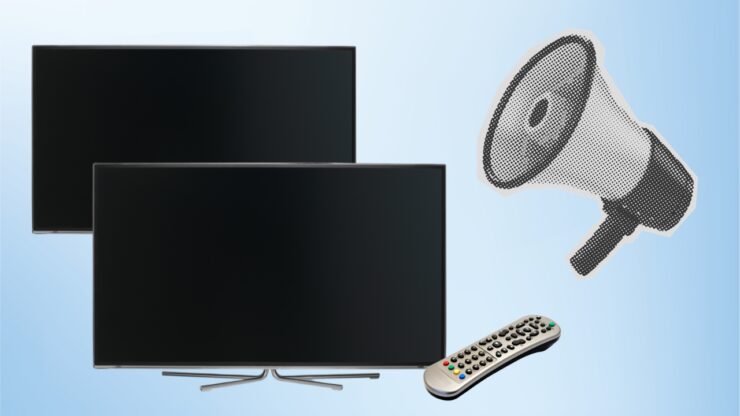Do you ever wonder how effective your TV advertising campaigns are? You’re not alone. TV advertising is a popular medium used by marketers, but it’s difficult to track its success. In fact, according to a recent study, 57% of marketers struggle with measuring TV advertising performance.
That’s why, today, we are going to explore different TV attribution model metrics and strategies to help you decode the effectiveness of your TV campaigns.
What is TV Attribution?

TV attribution is basically the method of measuring and tracking the effects of TV advertising on consumer behavior. By analyzing audience data, TV attribution helps to determine which channels and campaigns are the most successful in driving conversions.
Now you might be wondering, why is TV attribution even important?
The answer is pretty straightforward. As marketers, we need to understand which advertising strategies are the most successful. By understanding TV attribution, we can allocate our advertising spending more effectively — and choose the channels and campaigns that provide us with the best return on investment (ROI).
What Metrics Are Used for TV Attribution?
There are a few key metrics you can use to measure the effectiveness of your TV advertising efforts.
First up — reach and frequency. These metrics help us understand how many people are being exposed to our ads and how often. Reach measures the number of unique individuals who have viewed our ads, while frequency measures how many times those individuals have been exposed to our ads. By tracking this, we can determine if we’re reaching our desired target audience with the right frequency.
Next, we have cost-per-thousand impressions (CPM). This metric helps us measure the cost-effectiveness of our TV advertising efforts by calculating the cost of reaching one thousand viewers. By tracking and comparing CPM across different channels and campaigns, we can optimize our ad placements and maximize our budget.
Moving on, we have conversion rate, which measures the percentage of viewers who take a desired action after seeing our ads. This could include making a purchase, filling out a form, or visiting our website. By tracking this metric, we can determine the effectiveness of our messaging and creatives in driving conversions.
Cost of acquisition (COA) is another important metric used in TV attribution. This measures the cost of acquiring a new customer, including all marketing and advertising expenses. By comparing COA to the lifetime value of a customer (more on that in a minute), we can determine if our TV advertising efforts are profitable in the long term.
The last metric to consider is the customer lifetime value (CLV). This measures the total value that a customer brings to our business over their lifetime. By considering CLV when evaluating the effectiveness of our TV advertising efforts, we can make sure that we’re not only driving new customers but also retaining existing ones and maximizing their value.
4 TV Attribution Strategies

In addition to keeping an eye on certain metrics, there are a few different TV attribution strategies you might want to incorporate as part of your marketing plans, too.
Let’s start with single-source attribution. This method involves using a single data source, such as a panel of viewers, to measure the impact of your TV advertising. It’s a straightforward approach that can provide valuable insights into the effectiveness of your campaigns.
Next up is linear attribution. This model gives equal credit to each touchpoint along the customer journey, regardless of when it occurred. So, if a viewer saw your ad five times before making a purchase, each of those five touchpoints would be given equal credit.
Time decay attribution, on the other hand, gives more weight to touchpoints that occurred closer to the conversion event. This model assumes that the closer a touchpoint is to the conversion event, the more impactful it is in influencing the purchase decision.
U-shaped attribution is a hybrid model that combines elements of both linear and time decay. It gives more weight to the touchpoints that occurred early in the customer journey (awareness-building) and those that occurred closer to the conversion event (decision-making).
Finally, we have data-driven attribution. This approach uses machine learning algorithms to analyze large datasets and determine the most effective touchpoints for each customer journey.
1. Enhancing TV Attribution with Cross-Channel Analysis
Cross-channel analysis is a pivotal aspect of TV attribution. It involves tracking the viewer’s journey across different platforms, such as social media, online ads, and direct website visits following a TV ad.
By analyzing how TV ads influence behavior on other channels, marketers can get a more holistic view of their campaign’s impact. For instance, a spike in website traffic immediately after a TV ad airs could be a strong indicator of its effectiveness.
2. Leveraging Advanced Analytics and Big Data

In today’s data-driven world, leveraging advanced analytics and big data is crucial for effective TV attribution. With the abundance of data available, marketers can dive deeper into audience insights.
This includes demographic details, viewing patterns, and consumer preferences. Using big data analytics, marketers can refine their TV campaigns to target specific audience segments more effectively, leading to improved engagement and conversion rates.
3. Integrating TV Attribution with Overall Marketing Strategy
Integrating TV attribution metrics into your overall marketing strategy is essential. It’s not just about analyzing TV ads in isolation but understanding how they fit into the broader marketing mix.
This integration helps in optimizing the overall marketing budget and strategy. For example, insights from TV attribution can inform digital marketing efforts, ensuring a cohesive and synergistic approach to reaching target audiences.
4. Continuous Improvement and Optimization

Finally, TV attribution is not a one-time analysis but a continuous process. Regularly reviewing and adjusting campaigns based on attribution data is key to maintaining their effectiveness.
This could involve tweaking the messaging, adjusting the broadcast times, or even reallocating budgets to different channels or campaigns based on their performance. The goal is to create a dynamic, responsive marketing strategy that evolves with consumer trends and behaviors.
By expanding your focus to include these additional aspects, you can further enhance the effectiveness of your TV attribution efforts, leading to more informed decision-making and better overall marketing performance.
Final Thoughts
Decoding TV attribution may seem daunting, but investing in it will pay out dividends for your business. By understanding the effectiveness of their TV campaigns, marketers can drive better business outcomes, increase revenue, and improve customer satisfaction.
Ultimately, it’s not about how many people saw an ad or clicked on it — but how much of an impact it had on the bottom line. So don’t hesitate to invest your time and resources in TV attribution today — and stay ahead of the game!

